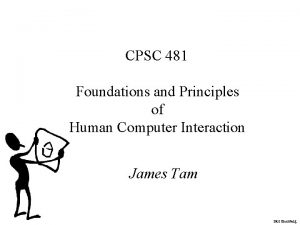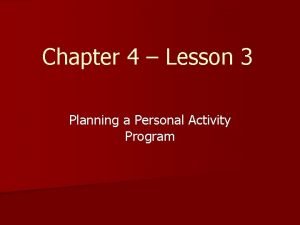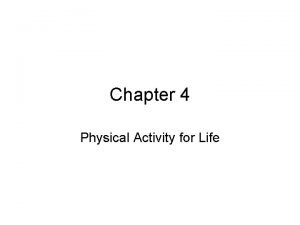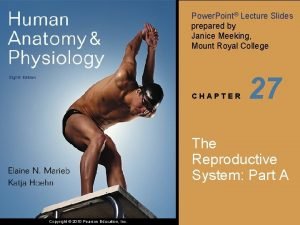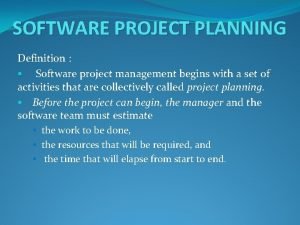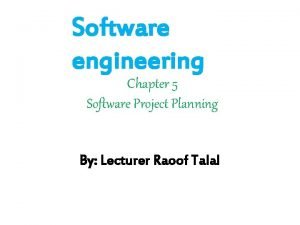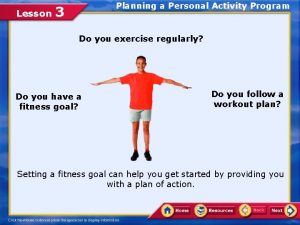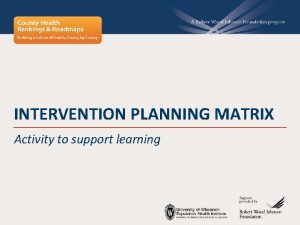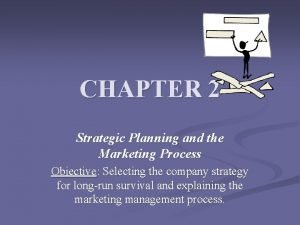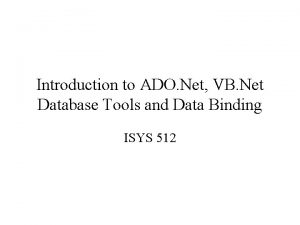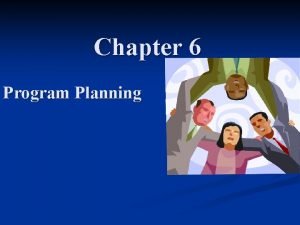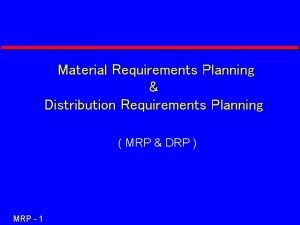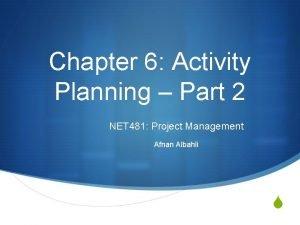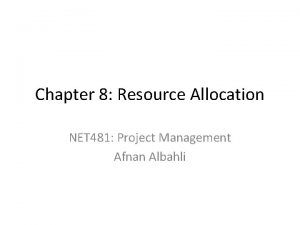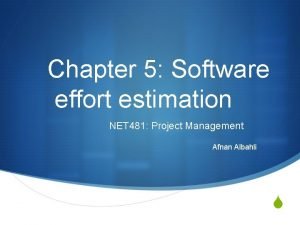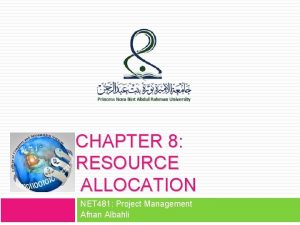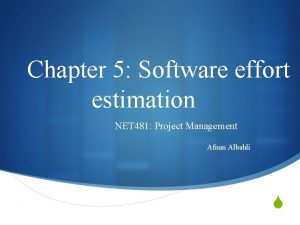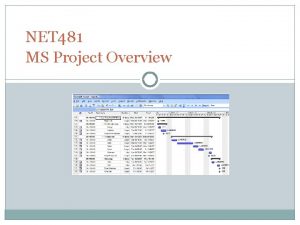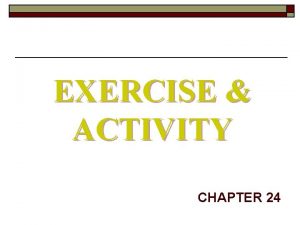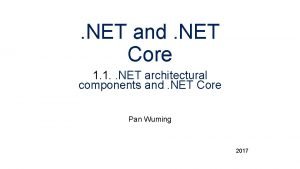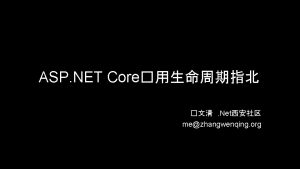Chapter 6 Activity Planning Part 1 NET 481




































- Slides: 36

Chapter 6: Activity Planning – Part 1 NET 481: Project Management Afnan Albahli S

Outline S Produce an activity plan for a project. S Estimate the overall duration of a project. S Be able to use different scheduling techniques. S Determine the critical path and critical activities for a project.

Project Plan A detailed plan for a project should include: S Estimate of effort. S For the project as a whole. S For each activity. S Estimate of schedule. S For the project as a whole. S For each activity.

Project Plan (cont’d) Planning will enable us to: S Ensure availability of resources when required. S Produce a detailed schedule showing which staff carry out each activity. S Avoid different activities competing for the same resources at the same time. S Produce a detailed plan against which actual achievement may be measured. S Produce a time “cash flow forecast”. S Re-plan the project during its life to correct drift from target.

Project Plan (cont’d) S A plan must be stated as a set of targets. S The activity plan provides a target start and a target completion date for each activity. S Ensuring that each activity produces a tangible product or deliverable will make monitoring the project’s progress easy. Why? S As the project progresses it is unlikely that everything will go according to plan.

Project Plan (cont’d) Thus most of the project management job will be to: S Recognize when something gores wrong. S Identify its causes. S Revise the plan to mitigate its effect.

Objectives of Activity planning In addition to providing project and recourse schedules. S Feasibility assessment. Is the project possible within S The required timescale and S Resource constraints.

Objectives of Activity planning (cont’d) For a project that has been estimated to require one person working 2 years (24 months), is it feasible to complete it within 3 months if 8 people (24/3) work on it ? It depends on the availability of staff. Degree of which activities can be done in parallel.

Objectives of Activity planning (cont’d) S Recourse allocation. S What are the most effective ways of allocating resources? S When should the resources be available? S Detailed costing. S How much will the project cost? S When is expenditure likely to take place?

Objectives of Activity planning (cont’d) S Motivation. S Providing targets. S Measuring achievements against targets is a good way of motivating staff. S It is also useful to involve the staff in setting targets. S Coordination. S When do staff in different departments need to be available to work on a particular project? S When do staff need to be transferred between projects?

Duration Versus Quality One effective way of shortening project duration is: S Carrying out activities in parallel. S It is not possible to undertake all activities at the same time. Why? S Precedence requirements. (activities) S and resources constraints.

Duration Versus Quality (cont’d) If we try to relax precedence constraints it is up to us to take care of the potential effects on the product quality. S e. g. allow a coding activity to commence before a design activity is completed.

When to Planning is an on-going process of refinement S Feasibility study and project start-up: S Estimate time and the risks of S not achieving the target S nor keeping it within budget S After the feasibility study: S Produce activity plans for ensuring S resource availability and S cash flow control.

When to Plan (cont’d) S Throughout the whole project: S we need to monitor the project and S revise our plan, if there is any drift that prevents the project from being completed on time and within budget.

Project Schedule Creating a project schedule comprises four steps: S Step 1: S Decide what activities to be carried. S In what order. S Based on that, we construct an ideal activity plan. S An ideal activity plan is a plan where there are no constraints on the resources.

Project Schedule (cont’d) S Step 2: S Activity risk analysis. S This might suggest alterations to the ideal activity plan and implications on resource allocation. S • Step 3: S Resource allocation. S The availability of resources may place constraints on when certain activities can be carried out. S The ideal plan might need to be adapted accordingly.

Project Schedule (cont’d) S Step 4: S Schedule production which contains: S Start date for each activity. S End date for each activity. S Resource requirement statement for each activity.

Projects Versus Activities S A S S S project: is composed of a number of related activities. may start when at least one of its activities is ready to start. will be completed when all of its activities have been completed. S An activity: S must have a clear start and a clear stop S resources must be for exactable. S should have a duration that can be forecasted. S may require that other activities be completed before they can begin.

Identifying Activities There are three approaches to identify the activities or tasks that will make up the project: S The activity-based approach. S The product-based approach. S The hybrid-based approach.

The activity-based approach The activity based approach consists of creating a list of all activities that the project is thought to involve. How? S Brainstorming session involving the whole project team S The analysis of similar past projects. S One useful way is to divide you projects into stages and think what activities might be required at each stage. On way of creating the activity or task list is to create WBS (Work Breakdown Structure).

The activity-based approach (cont’d)

The activity-based approach (cont’d) In WBS we: S Identify the main (high level) tasks (activities) required to complete a project. S Then break each of these down into a set of lower-level tasks.

The activity-based approach (cont’d) When preparing the WBS: S Too great depth should be avoided. Why? S Will result in a large number of tasks that will need to be managed. S Too shallow structure should be avoided. Why? S This will provide insufficient detail for project control.

The activity-based approach (cont’d) Advantages (WBS) S More likely to obtain a task catalogue that is: S Complete and S Composed of non-overlapping tasks S WBS represents a structure that can be refined as the project proceeds. S Early in the project, It can start shallow. S Developed as information becomes available e. g. during project analysis and specification phases. Once the project activities have been identified (whether using the WBS or not) they will need to be sequenced.

The product-based approach It consists of producing a product breakdown structure PBS, and a product flow diagram PFD. S Product Breakdown Structure (PBS) S To show a system can be broken down into different products for development. S Advantage: It is less likely to omit a product.

The product-based approach (cont’d) S Product Flow Diagram (PFD) S Indicates for each product, which products are required as ‘inputs’. S Advantage: It is easily transformed into an ordered list of activities. How? S By identifying the transformations that turn some products into others.

PBS

PFD

The hybrid-based approach S A mix of the activity-based approach and the product- based approach. S Most commonly used approach. The “WBS” in the hybrid approach is based on: S a list of the deliverable products of the project; and S a list of activities for producing each product.

The hybrid-based approach (cont’d)

Network Planning Models: are project scheduling techniques that model project activities and their relationships as a network. S Activity-on-Arrow techniques: S CPM (critical path method). S PERT (program evaluation review technique). S Activity-on-Node techniques: S Precedence Networks. These three methods are very similar and many people use CPM to refer to all of them.

Precedence Networks S In the precedence networks: S The nodes represent activities. S The lines between nodes represent dependencies.

Precedence Networks (cont’d) Rules and Conventions • A project network should have only one start node. • A project network should have only one end node. • A node has duration. • Links have no duration. • Precedents are referred to the immediate preceding activities. • Time moves from left to right. • A network may not contain loops. • A network should not contain dangles.

Precedence Networks (cont’d) Loops can't be directly represented in a project network. S If you know the number of times we expect to repeat a set of activities, then S we can draw them in a sequence repeating them for the appropriate number of times.

Precedence Networks (cont’d) A dangle: Here what is meant by the diagram is: that the project will be finished once we “the program has been installed” and “the user manual is written”. “Write user manual” is a dangling activity.

Precedence Networks (cont’d) S resolving the dangle
 Ds p baas
Ds p baas Csce 481
Csce 481 Cpsc 481
Cpsc 481 Prototype 1 or 2 reddit
Prototype 1 or 2 reddit Csce 481
Csce 481 Chapter 12 lesson 3 planning a personal activity program
Chapter 12 lesson 3 planning a personal activity program Personal activity plan
Personal activity plan Chapter 12 lesson 3 planning a personal activity program
Chapter 12 lesson 3 planning a personal activity program Reactants, products and leftovers
Reactants, products and leftovers Debye huckel equation
Debye huckel equation Draw aoa network diagram example
Draw aoa network diagram example Form content and use
Form content and use Activity 2 finding the sequence
Activity 2 finding the sequence Activity 2 whats the term
Activity 2 whats the term Activity 1 activity 2
Activity 1 activity 2 Art-labeling activity: the male reproductive system, part 1
Art-labeling activity: the male reproductive system, part 1 Potato battery explanation
Potato battery explanation Read the second part of the conversation in activity 2
Read the second part of the conversation in activity 2 Part part whole addition
Part part whole addition Part to part ratio definition
Part to part ratio definition Brainpop ratios
Brainpop ratios What is a technical description
What is a technical description What are the parts of a bar
What are the parts of a bar The part of a shadow surrounding the darkest part
The part of a shadow surrounding the darkest part Two way anova minitab 17
Two way anova minitab 17 Software project definition
Software project definition Environmental resources in software engineering
Environmental resources in software engineering The first step in planning a personal activity program is
The first step in planning a personal activity program is Activity identification approaches in spm
Activity identification approaches in spm Intervention matrix
Intervention matrix The major activity in strategic planning is
The major activity in strategic planning is Achmed lach net
Achmed lach net Ado.net vb.net
Ado.net vb.net An integral part planning and compiling a calendar is
An integral part planning and compiling a calendar is Distribution requirements planning
Distribution requirements planning High net worth tax planning
High net worth tax planning Strategic planning vs tactical planning
Strategic planning vs tactical planning


